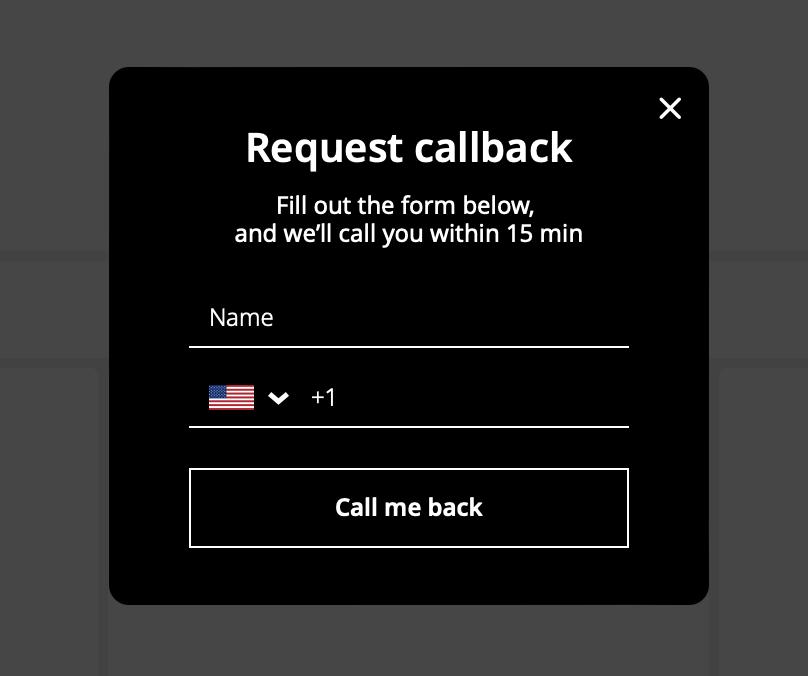
Establishing efficient connection channels is essential for businesses and organizations. One area that has seen significant advancements is callback systems, offering a streamlined and customer-centric approach to communication. In this article, we will take a deep dive into contemporary callback systems, exploring their features, benefits, and impact on refining connection channels.
Callback Systems Benefits
Callback systems, also known as “virtual hold” or “scheduled call back”, allow customers to request a callback from a company rather than waiting on hold during peak call times. Сallback widget can be especially useful as a proactive approach to enhancing the customer experience by providing an alternative to long wait times.
1. Real-time Queue Monitoring
Modern callback systems integrate real-time queue monitoring to track call volumes and identify peak hours. This data-driven approach enables businesses to anticipate high-demand periods and offer customers the option to schedule a callback, reducing frustration associated with lengthy hold times.
2. Customer Empowerment
Callback systems empower customers by giving them control over their interaction with a company. Instead of being tethered to the phone, customers can request a callback at a convenient time, allowing them to manage their schedule more efficiently.
3. Multi-Channel Integration
Contemporary callback systems seamlessly integrate with various communication channels, including phone, chat, and web interfaces. This multi-channel approach ensures a cohesive and unified experience for customers, regardless of how they initiate contact with the company.
4. Personalized Callback Options
Callback systems offer personalized options for customers to choose their preferred method of contact. Whether it’s a phone call, SMS, or email, customers can select the channel that aligns with their preferences, fostering a tailored and customer-centric approach.
5. Queue Position Alerts
Some callback systems provide queue position alerts, notifying customers of their position in the call queue and estimated wait times. This transparency helps manage customer expectations and reduces anxiety associated with uncertainty.
6. Enhanced Customer Satisfaction
By offering an alternative to traditional hold times, callback systems contribute to enhanced customer satisfaction. Customers appreciate businesses that value their time and provide options for efficient communication, leading to positive perceptions of the brand.
7. Optimizing Workforce Efficiency
Callback systems optimize workforce efficiency by evenly distributing incoming calls. Instead of dealing with spikes in call volume that may overwhelm agents, the system intelligently schedules callbacks, ensuring a more balanced workload for customer support teams.
8. Data Analytics for Continuous Improvement
Contemporary callback systems leverage data analytics to provide insights into customer behaviors and preferences. This information is invaluable for businesses looking to refine their connection channels, improve service delivery, and enhance overall customer experience.
9. Integration with Customer Relationship Management (CRM) Systems
Seamless integration with CRM systems allows callback systems to access customer information and interaction history. Agents can be equipped with contextual information, enabling personalized and informed conversations during callbacks.
10. Cost Savings for Businesses
From a business perspective, callback systems contribute to cost savings. By optimizing workforce efficiency and reducing call abandonment rates, companies can achieve operational efficiencies, ensuring that resources are allocated effectively.
11. Adaptability to Changing Customer Behavior
The digital landscape is dynamic, and customer behavior evolves. Contemporary callback systems are designed to adapt to changing customer preferences, ensuring that businesses can stay agile and responsive to shifts in communication patterns.
12. Security and Compliance Measures
Security is a top priority in contemporary callback systems. Robust encryption and compliance measures ensure the protection of sensitive customer information, instilling trust and confidence in the security of the communication channel.
13. AI-Powered Personalization
Artificial Intelligence (AI) is increasingly being integrated into callback systems to provide personalized experiences. AI algorithms analyze customer data to predict preferences, enabling businesses to tailor communication strategies and offer a more individualized service.
14. Global Accessibility
Callback systems facilitate global accessibility, allowing businesses to connect with customers across different time zones. The ability to schedule callbacks ensures that companies can serve a diverse and geographically dispersed customer base effectively.
15. Operational Resilience
In times of unexpected call volume surges or technical issues, callback systems contribute to operational resilience. They provide a structured approach to managing high-demand periods, preventing system overload, and maintaining service quality.
16. Feedback Loops for Continuous Enhancement
Many contemporary callback systems incorporate feedback loops, allowing businesses to collect insights directly from customers about their callback experience. This valuable feedback informs ongoing improvements, ensuring that the system remains aligned with customer expectations.
17. Scalability for Growing Businesses
Scalability is a key feature of modern callback systems, making them suitable for businesses of all sizes. Whether a small startup or a large enterprise, businesses can scale their callback capabilities to accommodate growth without compromising performance.
18. Crisis Communication Preparedness
Callback systems contribute to crisis communication preparedness. In times of unforeseen events or crises, businesses can use these systems to manage communication traffic effectively, ensuring that critical information is disseminated efficiently.
19. Future Trends in Callback Systems
Looking ahead, the future of callback systems involves further integration with emerging technologies. This includes enhanced AI capabilities for predictive callbacks, augmented reality interfaces for visual interactions, and advancements in natural language processing for more intuitive communication.
Conclusion
Contemporary callback systems are at the forefront of refining connection channels between businesses and their customers. By prioritizing customer empowerment, leveraging data analytics, and adapting to evolving communication trends, these systems play a crucial role in enhancing customer satisfaction, optimizing operational efficiency, and future-proofing businesses in the dynamic digital landscape. As technology continues to evolve, the trajectory of callback systems promises even greater innovations, shaping the future of customer communication.






